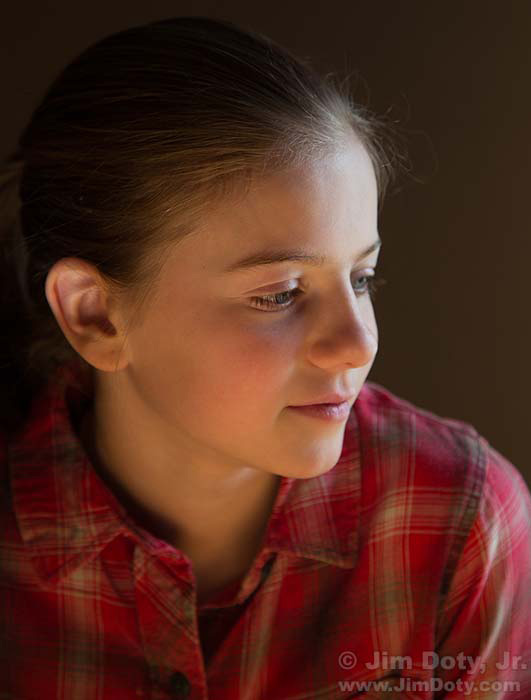 Reflected light can be beautiful. When you catch a rare moment with great light, take advantage of it.
Reflected light can be beautiful. When you catch a rare moment with great light, take advantage of it.
Sunday after church I heard laughter up by the organ where a lively conversation was going on. I glanced in that direction and saw this young teen sitting on the organ bench. As she moved the right side of her face caught some sunlight reflected off the wood of the organ. The warm wood tones of the organ shifted the color temperature of the sunlight. It was magic. I said to her “Don’t move.” She knew why I said it. I have photographed her and her sisters since they were little girls.
I grabbed a camera and lens from my backpack and walked over to the organ. I worked quickly before I lost the great light. I changed the white balance on the camera to daylight, metered the right side of her face, added about plus one stop (+1) of exposure compensation, recomposed, focused on her right eye, and clicked the shutter twice.
The original color of the sunlight coming through a nearby frosted window is visible on the left side of her face (camera right). It is not nearly so warm as the light bouncing off the wood of the organ.
The plus one exposure compensation I used insured the best possible color quality in the image. Using the right amount of exposure compensation is one of the secrets to getting great color in an image. A focal length around 80-100mm provides a nice perspective for a portrait. Too wide a focal length on a head and shoulders portrait distorts the face.
Photo Data: Canon 5D Mark III. Canon EF 24-105mm f/4L lens at 90mm. Aperture f/4, shutter 1/160 second, ISO 250.
Links
The Best Colors Come from The Best Exposures
How To Use Your Camera’s Exposure Compensation Scale
Your camera loves middle gray – and what to do about it.
Why exposure is so important (with links to a series of exposure articles).
If you want to master exposure, read my book, Digital Photography Exposures for Dummies. It is one of the highest rated photography books at Amazon.com. Magazine reviews describe it as one of the most complete, detailed, and comprehensive books on exposure. It covers intermediate and advanced exposures skills that are barely mentioned or not covered at all in other exposure books. When you master the basic skills you don’t need to buy another book to move on to advanced skills, so you are getting two books in one. More information here. Order it here.
